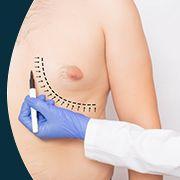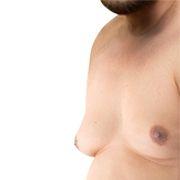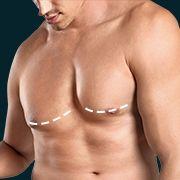Essential Post Lipoma Surgery Care
In This Article
Essential Post Lipoma Surgery Care
Elena
Updated on October 16, 2024
Medically verified by Dr. Arya
Fact checked by Dr. Fazeela

Cosmetic
5 min read
Though these growths are usually harmless, they can cause discomfort or cosmetic concerns, leading many to opt for surgical removal.
Post-surgery care is critical in ensuring a smooth recovery and minimizing complications.
In this guide, Mykare Health will explore the steps and precautions you should take after your lipoma removal surgery to help promote healing and avoid setbacks.
What to Expect After Lipoma Surgery
After undergoing lipoma removal surgery, your body needs time to heal properly. The procedure itself is typically simple and performed on an outpatient basis, meaning most patients can go home the same day. However, recovery time can vary based on the size of the lipoma, its location, and your overall health.
Immediately after surgery, you may experience the following
- Mild pain or discomfort: Most patients report minimal pain post-surgery, but your doctor may prescribe pain relievers if necessary.
- Swelling and bruising: It's common to experience some swelling or bruising around the incision site. This should gradually decrease within a few days.
- Limited movement: Depending on the lipoma's location, you may need to restrict your movement for a short period to avoid straining the incision area.
Post-Surgery Care Tips for Lipoma Removal
To ensure optimal recovery and minimize risks, it's essential to follow your doctor’s instructions closely. Below are practical tips to help guide you through the healing process:
1. Keep the Wound Clean and Dry
The incision area is vulnerable to infection during the healing process, so it’s crucial to keep the wound clean and dry. Follow these steps
- Change the dressing as advised by your surgeon.
- Use an antiseptic solution to clean the area daily.
- Avoid soaking the wound in water—this means no baths or swimming until cleared by your doctor.
2. Follow the Recommended Medication Plan
Your doctor may prescribe medications such as
- Pain relievers: These will help manage any discomfort during the recovery phase.
- Antibiotics: If there's a risk of infection, your doctor may prescribe antibiotics to prevent complications. Take these medications exactly as instructed and complete the full course, even if you feel better before finishing.
 9 min read
9 min readThe Advantages of Choosing Mykare Health for Gynecomastia Surgery
 6 min read
6 min readIdentifying The Ideal Age For Gynecomastia Surgery
 6 min read
6 min readPre and Post Gynecomastia Surgery: Essential Things to Know
Get a Callback Now
Swelling is normal after surgery, but you can manage it by
- Applying ice packs: Place an ice pack over the incision area for 15-20 minutes at a time, especially during the first 48 hours.
- Elevating the area: If the lipoma was removed from an extremity (e.g., your arm or leg), keep it elevated to help reduce swelling.
4. Wear Comfortable Clothing
If the lipoma was removed from an area that experiences regular movement, such as your back or leg, avoid tight or restrictive clothing. Opt for loose-fitting garments to prevent irritation and ensure proper airflow around the incision site.
5. Watch for Signs of Infection
While infections after lipoma surgery are rare, it’s essential to monitor the incision for signs of trouble, such as:
- Redness and warmth around the wound.
- Increased swelling or pain.
- Pus or unusual discharge from the incision.
- Fever or chills. If you notice any of these symptoms, contact your doctor immediately to avoid further complications.
6. Limit Physical Activity
In the days following your surgery, limit activities that might strain the incision area. Avoid lifting heavy objects, strenuous exercise, or movements that could cause the wound to reopen. Your doctor will give you guidance on when it's safe to resume normal activities.
7. Follow a Healthy Diet
A balanced diet rich in nutrients can speed up recovery. Focus on foods that promote healing, including:
- Protein-rich foods like lean meat, fish, and eggs to aid tissue repair.
- Fruits and vegetables rich in vitamins C and A to support your immune system and reduce inflammation.
- Hydration: Drink plenty of water to keep your body hydrated, which aids the healing process.
8. Avoid Smoking and Alcohol
Smoking and alcohol can impair wound healing and increase your risk of infection. If you smoke, try to quit or reduce your intake while you recover. Similarly, avoid alcohol as it can interfere with medications and delay healing.
9. Attend Follow-Up Appointments
Your doctor will schedule follow-up visits to monitor your progress. These appointments are essential for ensuring that the incision is healing properly and that there are no complications. Attend all appointments and notify your healthcare provider if you have concerns between visits.
10. Be Patient with Scar Healing
Scarring is a natural part of the healing process after surgery. While the scar may initially appear red or raised, it will likely fade over time. To minimize scarring, you can:
- Apply silicone gel or scar cream as recommended by your doctor.
- Protect the area from sun exposure, as UV rays can darken scars.
- Avoid picking at scabs or scratching the incision site.
Conclusion
Recovering from lipoma removal surgery is typically straightforward, but following proper post-operative care is crucial to ensure a smooth recovery. By keeping the incision clean, managing swelling, and following your doctor’s instructions, you can reduce the risk of complications and promote faster healing. Remember to be patient, as it may take a few weeks for your body to fully recover.
Wound care is critical: Keep the incision clean and dry to prevent infection.
Take prescribed medications: Follow your doctor’s instructions for pain management and antibiotics.
Manage swelling: Apply ice packs and elevate the area, if necessary, to reduce inflammation.
Wear loose-fitting clothing: Avoid tight garments that could irritate the incision area.
Monitor for infection: Watch for signs of infection like redness, swelling, or unusual discharge.
Limit physical activity: Rest and avoid strenuous activities that could strain the wound.
Eat a balanced diet: Nutrient-rich foods help speed up recovery and strengthen your immune system.
Avoid smoking and alcohol: These habits can slow down the healing process and increase the risk of complications.
Attend follow-up appointments: Regular check-ins with your doctor ensure your recovery is on track.
Be patient with scarring: Scars will fade over time, and there are treatments to help minimize their appearance.
Source Links
Mayo Clinic
American Academy of Dermatology
Cleveland Clinic



